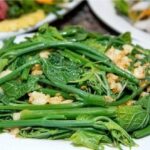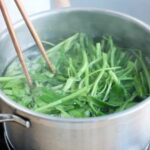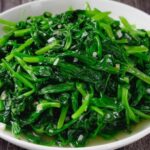Blanching Vegetables: Starting with Cold Water
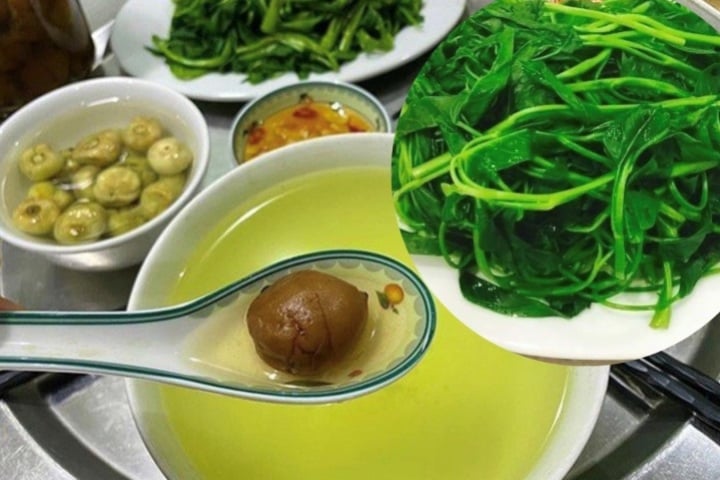
Avoiding Common Pitfalls When Cooking Water Spinach
Vegetables are rich in vitamins and minerals. However, boiling or stir-frying them for too long can cause these nutrients to leach into the cooking water, reducing their nutritional value.
The recommended approach is to bring a pot of water to a rolling boil and add a pinch of salt to increase the boiling temperature. Then, add your vegetables. Salt helps preserve vitamin C, maintains the green color, and enhances the flavor of your dish. You may also add a small amount of cooking oil to create a thin protective layer, keeping your greens vibrant and glossy without altering their color. However, this will leave an oily film on the water, making it less suitable for other uses.
Insufficient Water for Blanching
Some people believe that using too much water will dilute the flavor of the vegetables, so they use a minimal amount when blanching. This often results in dull-colored vegetables, and the exposure to air during cooking can lead to the breakdown of vitamin C.
The correct approach is to use just enough water to fully submerge the vegetables. When the water is boiling vigorously, add the vegetables in batches, using a wooden or bamboo utensil to gently push them down if needed. As soon as the vegetables are cooked, remove them with a slotted spoon and place them in a colander to drain and cool quickly, preserving their crisp texture. Avoid using metal utensils as they can destroy vitamin C.
Rinsing Vegetables Inadequately
Many people still follow the practice of rinsing vegetables three times and assume that this is sufficient to remove all contaminants. However, this method only works if your produce is simply dirty and does not contain any chemical residues. If chemicals are present, they will not be adequately rinsed away with this method.
Failing to thoroughly remove these harmful chemicals can lead to stomachaches, digestive issues, and, in severe cases, food poisoning. Additionally, vegetables can harbor parasites, so it is crucial to rinse them thoroughly under running water, ensuring that each piece is cleaned individually.
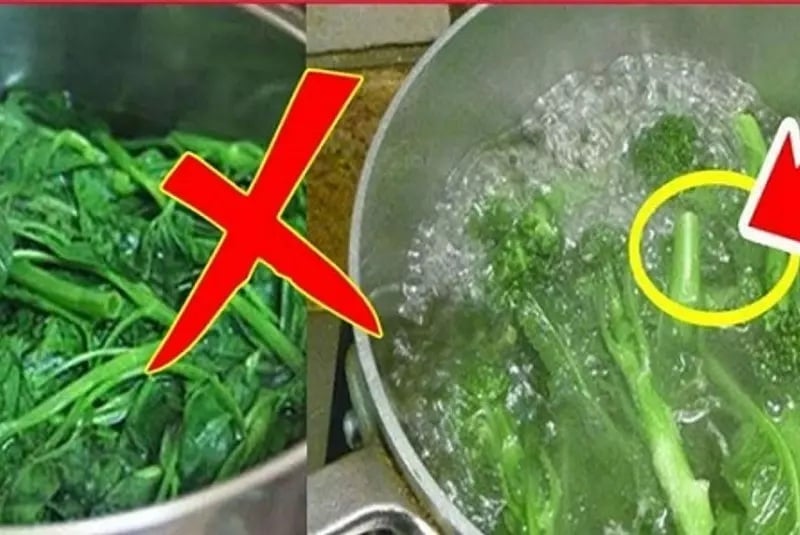
Blanching Vegetables: Preserving Nutrients
A safer and more effective approach is to soak your vegetables in a large basin of water before rinsing. Using rice washing water is even better, as it helps remove chemical residues from the surface of your produce. Alternatively, you can soak the vegetables with a small amount of salt to kill any microbial eggs that may be present.
Overcooking Vegetables
When vegetables are boiled over high heat, they cook very quickly. Some varieties, like water spinach and yardlong beans, only need to be boiled for a minute or so. For vegetables like broccoli, steaming or eating them raw is the best option. However, many home cooks, out of caution, tend to overcook their vegetables for fear of undercooking them. This results in a loss of texture and nutrients.
The solution is to cook your vegetables just right, depending on their type. For instance, water spinach cooks quickly, while Chinese cabbage may take a little longer. Always taste-test your vegetables to ensure they are cooked to your desired doneness, avoiding overcooking.
Not Consuming Vegetables Immediately After Blanching
Vegetables are at their most nutritious and flavorful right after blanching, so it is best to consume them immediately. Many people wait for the vegetables to cool down before eating, unaware that doing so results in a significant loss of vitamins—up to 25% after an hour and 35-47% after two hours.
Additionally, reheating cooked vegetables can result in a 90% loss of vitamins. Therefore, it is not advisable to keep them overnight, as their nutritional value will be greatly diminished. Storing vegetables in the refrigerator is also dangerous, as the nitrate content in the vegetables can convert to nitrite, a known carcinogen.
The best solution is to consume your vegetables immediately after cooking, avoiding any delay or storage that could lead to the formation of harmful substances.


